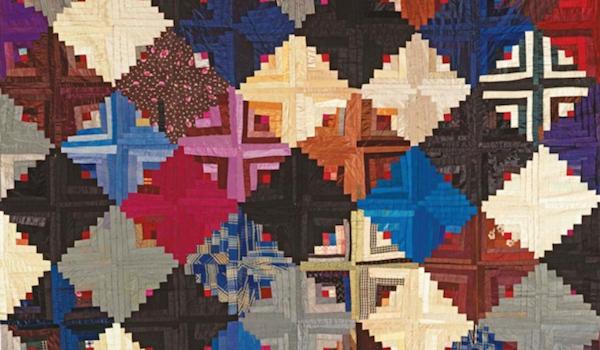
Quilts Of Freedom

It was 1974 in Selma, Alabama, and Olivia Alison had no idea that the quilt she sometimes spread on the ground as a picnic blanket would end up on the walls of a museum nearly 40 years later. The quilter was Alberta Miller, an African-American woman who worked as a housekeeper and babysitter for the family next door to the Alisons. Although Miller did not leave any written history of her life, her employer recalls some details; Alberta Miller was the mother of more than 20 children, including two sets of twins and one set of triplets. At one point in her life, a truck ran off the road, flattening her house, so she moved to a trailer. Judging by her gift of a quilt, Alberta Miller had a generous nature. As with all of the quilts on display in A century of African-American Quilts at the Museum of Colonial Williamsburg, the lives of the people behind them are as important as the patterns within them.

Alberta Miller’s asymmetrical design combines rectangular strips of cloth in a style sometimes called a ‘string quilt’. The strips include wool, cotton and polyester double knit dress fabrics in a startling combination of muted and brilliant colours. The bright yellow strips placed at a 90 degree angle at the corner are echoed by the small patch of yellow that adds zest to the more subdued blue and brown plaids of the rest. Hand-quilting stitches are arranged in random rows, ignoring the outlines of the pieces. Blue cotton backing is brought to the front to form a binding at the top and bottom. The coarse batting in the quilt consists of unrefined cotton from the local gin, with fragments of seeds and stalks still present.

In the century and a quarter following the abolition of slavery in America, African-American women made an astounding variety of quilts, many of which, like Alberta Miller’s gift, display a freedom from convention that sets them apart from more typical, appliquéd and pieced bedcovers. The quilts varied considerably, depending on the quilt’s purpose as well as the region and personal artistic vision of its maker. Some African-American quilters borrowed from or adapted styles that their Anglo-American neighbours favoured. Others followed their own artistic vision, informed and influenced by their African heritage. Whatever the style, quilts by African-Americans have come into their own, appreciated by lovers of fine art as well as quilters and textile aficionados...
You can read this article in full in Selvedge issue 71.
A century of African-American Quilts, until May 2018.
Museum of Colonial Williamsburg, 101 Visitor Center Drive, Williamsburg, VA 23185
